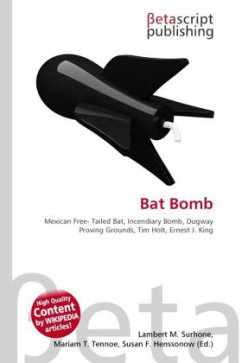High Quality Content by WIKIPEDIA articles! High Quality Content by WIKIPEDIA articles! High Quality Content by WIKIPEDIA articles! Bat bombs were bomb-shaped casings with numerous compartments, each containing a Mexican Free-tailed Bat with a small timed incendiary bomb attached. Dropped from a bomber at dawn, the casings would deploy a parachute in mid-flight and open to release the bats which would then roost in eaves and attics. The incendiaries would start fires in inaccessible places in the largely wood and paper construction of the Japanese cities that were the weapon's intended target. Developed by the United States during World War II, four biological factors gave promise to this plan. First, bats occur in large numbers (four caves in Texas are each occupied by several million bats). Second, bats can carry more than their own weight in flight (females carry their young sometimes twins). Third, bats hibernate, and while dormant they do not require food or maintenance. Fourth, bats fly in darkness, then find secluded places (often in buildings) to hide during daylight.
Bitte wählen Sie Ihr Anliegen aus.
Rechnungen
Retourenschein anfordern
Bestellstatus
Storno








